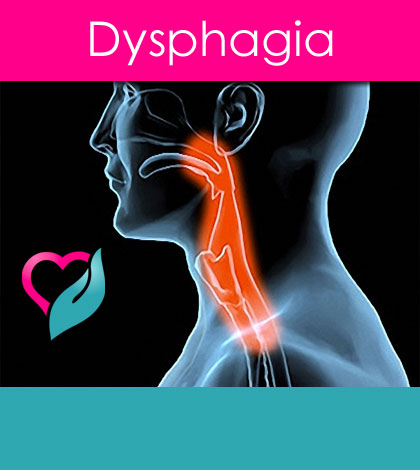Difficulty in swallowing (dysphagia) means that it takes more time and effort to move food or liquid from your mouth to your stomach . This symptom can occur at any age but is more common in older adult .
[wp_ad_camp_1]
Dysphagia occurs when there is a problem with the neural control or the structures involved in any part of the swallowing process. Weak tongue or cheek muscles may make it hard to move food around in the mouth for chewing. A stroke or other nervous system disorder may make it difficult to start the swallowing response, a stimulus that allows food and liquids to move safely through the throat. Another swallowing disorder can be the passage of food the wrong way I e in to the larynx and trachea instead of the esophagus. Consequently, aspiration pneumonia can develop in such cases. Some people present with “silent aspiration “and do not cough or show outward signs of aspiration. Dysphagia may also result from disorders of the esophagus The causes of swallowing difficulties vary , and treatment depends on the cause.
[wp_ad_camp_4]
Dysphagia assessment and treatment has not been given much importance in the current health care system . Amrita Dysphagia clinic (ADC) envisages a single platform for the multidisciplinary team members to identify and remediate feeding and swallowing disorders from infancy through adulthood. The focus of ADC is to provide family centered care with support through counselling, networking and training.
[wp_ad_camp_2]
The Amrita dysphagia clinic offers a range of diagnostic procedures to determine the cause of swallowing problem. Tests depend on each patients specific problem and on the results of a comprehensive interview and examination.
Evaluation may include :
- Detailed subjective evaluation of swallowing for all patients reporting to the dysphagia clinic complaining swallowing difficulty.
- Flexible endoscopic evaluation of swallowing (FEES) to assess the laryngeal function when the patient is swallowing
- Rigid endoscopiy to assess laryngeal structure and function.
- Videofluroscopy swallowing studies assess the motor function of the upper digestive tract.
- Bed side swallowing evaluation for all admitted patients having difficulty in swallowing
Rehabilitation may include:
- Swallowing therapy for all clients requiring rehabilitation of swallowing
- Prosthetic management, medical and surgical management.
[sws_green_box box_size=”600″] Article by,
Meera Suman,
Swallowing pathologist, Amrita institute of medical sciences, Head and Neck department: Tower 1 Floor 4.[/sws_green_box]
[wp_ad_camp_3]
Image Courtesy : cbc.ca , sandiegolaserperio.info






















